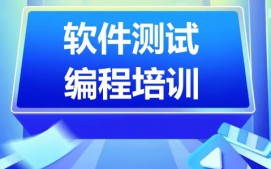本编码检测选用python3编译器
1.find string = "i love python very much " 查验字符串数组是不是包括在string中,假如包括则回到字符串数组逐渐的字符(数据库索引),假如不包含则回到-1
string = "i love python very much "
string.find("love")
2
string.find("study")
-1
rfind 和find相近,但是是以右边开始查找,由于有的字符串数组在原字符串数组中也有好几个,但传参仅有**个,全部rfind是归属于右边优先选择标准
2.index 功效和find一样,但假如不包含字符串数组则抛出现异常(出错),rindex和rfind相近
string = "i love python very much "
string.index("love")
2
string.index("study")
Traceback (most recent call last):
File "", line 1, inValueError: substring not found
3.count 回到字符串数组在总体目标字符串数组中产生的频次
string = "i love python very much "
string.count("o")
2
string.count("python")
1
string.count(" ")
5
string.count("study")
0
4.replace 将字符串数组中规定的字符串数组用其他字符串数组开展更换
string = "i love python very much "result1 = string.replace("python","girl")
result1
'i love girl very much '#行内编码中的2指得是数最多应用—_更换2个空格符,第三个主要参数不写默认设置为0
result2 = string.replace(" ","_",2)
result2
'i_love_python very much '
5.split 以特定标识符切分切成片字符串数组,传参为list目录,无主要参数默认设置为空格符切分
string = "i love python very much "#不写主要参数默认设置应用空格符切分,且持续好几个空格符视作一个#若空格符在**部或尾端则不会再往两边切分result3 = string.split()
result3
['i', 'love', 'python', 'very', 'much']
result4 = string.split(" ")
result4
['i', 'love', 'python', 'very', 'much', '']
result5 = string.split("e")
result5
['i lov', ' python v', 'ry much ']
6.capitalize 将字符串数组首写转化成英文大写
string = "i love python very much "result6 = string.capitalize() result6 'I love python very much '
7.title 将字符串数组中各个英语单词的首写
result7 = string.title() result7'I Love Python Very Much '
8.starswith 查验字符串数组开始是不是包括特定字符串数组
string = "i love python very much "result9 = string.startswith("i")
result9
True
result10 = string.startswith("a")
result10
False
9.endswith 查验字符串数组末尾是不是包括特定字符串数组,和startswith相近
string = "i love python very much "result11 = string.endswith(" ")
result11
True
result12 = string.endswith("ab")
result12
False
10.lower 将字符串数组中全部的英文大写字母转换为小写字母
string = "i love python very much"result13 = string.lower() result13'i love python very much' 11.upper 将字符串数组中全部的英文字母转换为英文大写,和lower反过来的功效 string = "i love python very much"result14 = string.upper() result14'I LOVE PYTHON VERY MUCH'
12.ljust 回到一个原字符串数组左两端对齐,并应用空格符来添充剩下地方的字符串数组
string =" hello"result15 = string.ljust(10) result15 'hello '
13.rjust 回到一个原字符串数组右两端对齐,并应用空格符来添充剩下地方的字符串数组
string =" hello"result16 = string.rjust(10) result16 ' hello'
14.center 回到一个原字符串数组垂直居中两端对齐,并应用空格符来添充剩下地方的字符串数组
string =" hello"result17 = string.center(9) result17 ' hello '












